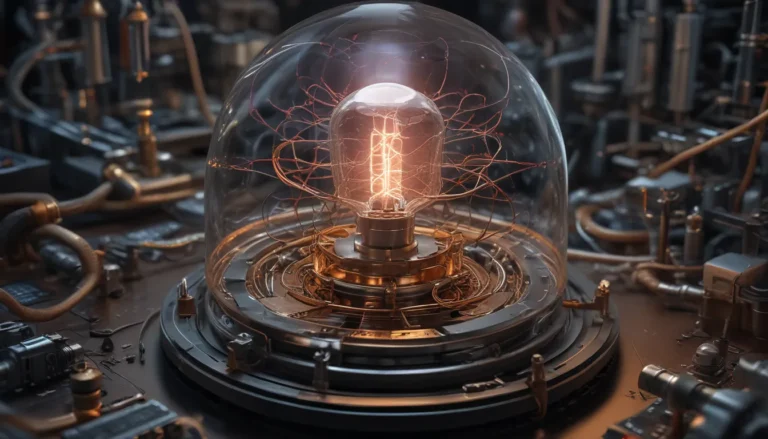A Note About Images: The images used in our articles are for illustration purposes only and may not exactly match the content. They are meant to engage readers, but the text should be relied upon for accurate information.
Newton’s second law of motion, also known as the law of acceleration, is a foundational principle in classical physics discovered by Sir Isaac Newton in the late 17th century. This law provides a deep understanding of how objects behave under the influence of external forces. Let’s delve into 14 extraordinary facts about this law, exploring its applications, implications, and the fascinating phenomena it helps us unravel.
Exploring the Formula: F = ma
The essence of Newton’s second law is mathematically expressed as F = ma. In this equation, F represents the force applied to an object, m is its mass, and a is the resulting acceleration. This straightforward formula serves as a robust tool for predicting and analyzing the motion of objects.
Understanding Acceleration and Force
According to Newton’s Second Law, the acceleration of an object is directly proportional to the force exerted on it. In simple terms, the greater the force applied, the greater the resulting acceleration. This fundamental relationship is key to understanding how objects move and change their velocities.
The Influence of Mass on Acceleration
In an inverse relationship, the acceleration of an object is inversely proportional to its mass. This implies that lighter objects accelerate more easily than heavier ones when subjected to the same force. This concept explains why a small car can accelerate faster than a large truck.
- Lighter objects accelerate more easily than heavier ones.
- This law is crucial for understanding how objects move.
Visualizing with the Force, Mass, and Acceleration Triangle
Visual representations can enhance our understanding of complex concepts. Newton’s Second Law can be visualized in a triangle known as the Force, Mass, and Acceleration triangle. This graphical tool aids in comprehending the relationships between force, mass, and acceleration and calculating unknown values in dynamic scenarios.
- The Force, Mass, and Acceleration triangle is a graphical tool.
- It helps in understanding the relationships between force, mass, and acceleration.
Newton’s Second Law in Real-Life Applications
The impact of Newton’s Second Law extends beyond theoretical physics to practical applications in various fields:
- Sports: The law influences sports like baseball, where force determines acceleration, speed, and projectile trajectory.
- Rocket Propulsion: Rocket engines utilize the law for propulsion by generating a powerful backward force through high-speed gas expulsion.
- Weight Calculation: The law enables the calculation of an object’s weight based on the force of gravity acting upon it.
Newton’s Second Law in Engineering and Collisions
-
Engineering Applications: Engineers rely on Newton’s Second Law to design structures, vehicles, and devices, ensuring safety and efficiency through force calculations and acceleration predictions.
-
Collision Outcomes: By analyzing forces and accelerations in collisions, physicists can predict and understand the consequences of such events in real-life scenarios.
Newton’s Second Law in the Greater Physics Framework
- Newton’s First Law Relationship: Newton’s Second Law complements his First Law of Motion, providing a framework for understanding the behavior of objects at rest or in motion.
-
Three-Dimensional Motion: This law applies not only to linear motion but also to motion in multiple dimensions, accounting for forces acting in different planes.
-
Conservation of Momentum: Newton’s Second Law is closely linked to the principle of conservation of momentum, stating that the total momentum of a closed system remains constant in the absence of external forces.
Unraveling Inertia with Newton’s Second Law
Newton’s Second Law aids in understanding the concept of inertia, which describes an object’s resistance to changes in its state of motion. Objects with greater mass exhibit more inertia, reflecting their tendency to resist changes in movement.
Conclusion: Embracing the Acceleration of Knowledge
In conclusion, Newton’s second law of motion, the law of acceleration, stands as a monumental pillar in classical physics. By grasping the essence of this law and its mathematical formulation, we unlock a gateway to understanding how forces shape the movement of objects in our world.
From everyday experiences to space exploration, Newton’s Second Law resonates across various realms, offering profound insights into the dynamics of motion. Whether you are a physics enthusiast seeking to uncover the mysteries of the universe or a curious mind fascinated by the laws governing our reality, delving into Newton’s Second Law promises a rewarding journey through the realms of physics.
FAQs: Navigating the Path of Knowledge
Q: What is Newton’s second law of motion?
A: Newton’s second law of motion states that the acceleration of an object is directly proportional to the net force applied to it and inversely proportional to its mass.
Q: How can I apply Newton’s second law in real-life situations?
A: You can apply Newton’s second law in various real-life situations, such as understanding how a car accelerates or calculating the force required to lift an object.
Q: What is the formula for Newton’s second law?
A: The formula for Newton’s second law is F = ma, where F is the net force applied to the object, m is the mass of the object, and a is the acceleration.
Q: Is Newton’s second law applicable only on Earth?
A: No, Newton’s second law is applicable in any environment, whether it’s on Earth, in space, or in other celestial bodies.
Q: How does Newton’s second law relate to the concept of inertia?
A: Newton’s second law explains how forces cause objects to accelerate or decelerate, while the concept of inertia refers to an object’s resistance to changes in its state of motion.
Dive deeper into the mysteries of physics with Newton’s Second Law of Motion as your guiding beacon!






